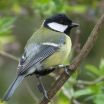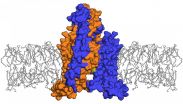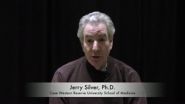New study validates usefulness of genomic medicine in children with neurologic disorders
Genomic tests are uncovering elusive diagnoses, saving time and money, and changing treatment for infants and children
2014-12-03
(Press-News.org) Kansas City, Mo. -- December 3, 2014 -- Results from more than 100 families with children affected by a broad range of neurologic and developmental disorders who underwent genomic testing to end their quest for a diagnosis, were published today in Science Translational Medicine. This is the first study to show that a genome-based diagnostic approach directly impacts patient care of both infants and older children with neurologic disorders. Forty-five percent of families received a diagnosis by exome or genome sequencing, fifty percent of those diagnosed had a change in clinical impression or management and, in older children, genome-based diagnosis could have cut the wait for a diagnosis by more than six years. The study was led by Drs. Sarah Soden and Stephen Kingsmore of the Center for Pediatric Genomic Medicine at Children's Mercy Kansas City.
"We are striving to realize the benefits of genomic medicine in clinical care," said Dr. Soden. "These are exciting results that validate the promise of these technologies in children with a broad range of neurologic and developmental disorders. We've shown that genomic sequencing can end the diagnostic odyssey and have an immediate impact on patient care. Now we want to determine what kind of long-term impact that can have on a child's health and development; and how it impacts the family."
Eighty-five of the families studied had been seeking a diagnosis for their children for an average of six and a half years. They had spent an average $19,100 on prior tests that did not give a diagnosis. After exome or whole genome sequencing, forty percent of these children had a definitive diagnosis. Fifteen families in the study had infants with an acute medical condition at birth likely caused by a genetic disease; testing by rapid whole genome sequencing (STAT-Seq) enabled a diagnosis for seventy-three percent.
STAT-Seq test was one of TIME magazine's Top 10 Medical Breakthroughs of 2012 and is being developed in collaboration with Illumina, Inc. Still under research protocol, STAT-Seq is the fastest whole-genome test in the world, taking less than 50 hours from test order to delivery of an initial report.
In this study, half of the diagnoses affected the physician's impression of the patient's disorder or the clinical treatment plan. Physicians started new medications, discontinued treatments or supplements, and tested patients for complications associated with the genetic finding. Sequencing technologies not only identified known genetic diseases, but also new genetic diseases and previously unreported manifestations of known genetic disorders.
INFORMATION:
About Children's Mercy
Children's Mercy, located in Kansas City, Mo., is one of the nation's top pediatric medical centers. The 354-bed, not-for-profit hospital provides care for children from birth through the age of 21, and has been ranked by U.S. News & World Report as one of "America's Best Children's Hospitals." For the third time in a row, Children's Mercy has achieved Magnet nursing designation, awarded to fewer than seven percent of all hospitals nationally, for excellence in quality care. Its faculty of 600 pediatricians and researchers across more than 40 subspecialties are actively involved in clinical care, pediatric research, and educating the next generation of pediatric subspecialists.
ELSE PRESS RELEASES FROM THIS DATE:
2014-12-03
PULLMAN, Wash.--Washington State University researchers have found that it is counter-productive to kill wolves to keep them from preying on livestock. Shooting and trapping lead to more dead sheep and cattle the following year, not fewer.
Writing in the journal PLOS ONE, WSU wildlife biologist Rob Wielgus and data analyst Kaylie Peebles say that, for each wolf killed, the odds of more livestock depredations increase significantly.
The trend continues until 25 percent of the wolves in an area are killed. Ranchers and wildlife managers then see a "standing wave of livestock ...
2014-12-03
Koala population distribution may be influenced by eucalyptus leaf toxin and nutrient content, especially in areas with low-quality food options, according to a study published December 3, 2014 in the open-access journal PLOS ONE by Eleanor Stalenberg from The Australian National University and colleagues.
Scientists suspect that access to nutritious food plays a role in herbivore distribution and abundance, but there is still some debate over how variation in plant nutritional qualities may influence population distribution. Koalas predominantly eat eucalyptus leaves ...
2014-12-03
A population of humpback whales that resides in the Arabian Sea may have been isolated for ~70,000 years, according to a study published December 3, 2014 in the open-access journal PLOS ONE by Cristina Pomilla, Ana Rita Amaral, Howard Rosenbaum, and Tim Collins of the Wildlife Conservation Society, the American Museum of Natural History, and their colleagues.
The small, non-migratory population of Arabian Sea humpback whales is currently classified as "Endangered" on the IUCN Red List of Threatened Species. Scientists have limited data on the difficult-to-study population, ...
2014-12-03
Aspects of the culture of research in UK higher education institutions (HEIs) can encourage poor research practices and hinder the production of high quality science, according to scientists who took part in a project exploring the ethical consequences of the culture of research led by the Nuffield Council on Bioethics.
The findings of the project, which included a survey of almost 1000 scientists and others, suggest that scientists are motivated in their work to find out more about the world and benefit society, and that they believe collaboration, multidisciplinarity, ...
2014-12-03
Birds learn new foraging techniques by observing others in their social network, 'copycat' behaviour that can sustain foraging 'traditions' that last years, according to a study of how innovations spread and persist in wild great tits (Parus major).
The study involved experiments with eight local populations of great tits in Wytham Woods, Oxfordshire (UK). In five of the populations two male birds were trained to slide a puzzle box door either to the left or to the right. In three control groups two males were captured but not trained. The birds were then released back ...
2014-12-03
Whether stubbing a toe or stroking a cat, the sensation of touch starts out as a mechanical force that is then transformed into an electrical signal conveying pain or other sensations. Tiny channels in neurons act as translators by helping to formulate that signal to the brain. However, scientists know little about the fine details of how these channels work.
New work at Rockefeller University has revealed that one such channel in humans responds to mechanical force using a never-before-seen mechanism. Researchers led by Roderick MacKinnon, John D. Rockefeller Jr. Professor ...
2014-12-03
A team of biomedical engineers at Washington University in St. Louis, led by Lihong Wang, PhD, the Gene K. Beare Distinguished Professor of Biomedical Engineering, has developed the world's fastest receive-only 2-D camera, a device that can capture events up to 100 billion frames per second.
That's orders of magnitude faster than any current receive-only ultrafast imaging techniques, which are limited by on-chip storage and electronic readout speed to operations of about 10 million frames per second.
Using the Washington University technique, called compressed ultrafast ...
2014-12-03
VIDEO:
NIH-funded scientists developed a promising new drug that may lead to spinal cord injury treatments.
Click here for more information.
Injections of a new drug may partially relieve paralyzing spinal cord injuries, based on indications from a study in rats, which was partly funded by the National Institutes of Health
The results demonstrate how fundamental laboratory research may lead to new therapies.
"We're very excited at the possibility that millions of people ...
2014-12-03
Case Western Reserve scientists have developed a new chemical compound that shows extraordinary promise in restoring function lost to spinal cord injury. The compound, which the researchers dubbed intracellular sigma peptide (ISP), allowed paralyzed muscles to activate in more than 80 percent of the animals tested. The remarkable study, partly funded by the National Institutes of Health, appears in the December 3 edition of the journal Nature.
Case Western Reserve University School of Medicine Professor of Neurosciences Jerry Silver, PhD, the senior author, led an international ...
2014-12-03
Pilots are trained to guard against vertigo: a sudden loss of the sense of vertical direction that renders them unable to tell "up" from "down" and sometimes even leads to crashes. Coming up out of a subway station can produce similar confusion: For a few moments, you are unsure which way to go, until regaining your sense of direction. In both cases, the disorientation is thought to be caused by a temporary malfunction of a brain circuit that operates as a three-dimensional (3D) compass.
Weizmann Institute scientists have now for the first time demonstrated the existence ...
LAST 30 PRESS RELEASES:
[Press-News.org] New study validates usefulness of genomic medicine in children with neurologic disorders
Genomic tests are uncovering elusive diagnoses, saving time and money, and changing treatment for infants and children




